Analysis of Wind-Induced Vibration Response in Additional Conductors and Fittings Based on the Finite Element Method
Abstract
1. Introduction
2. Application and Loading Conditions of Wind Forces
2.1. Generation of Fluctuating Wind Time Histories
2.2. Wind-Induced Vibration Model of the Additional Conductor
2.3. Additional Conductor Wind Vibration Model
3. Reconstruction of Wind-Induced Vibration and Structural Optimization of Additional Conductors
3.1. Reconstruction of Wind-Induced Vibration in Additional Conductors
3.2. Influence of Tension on Wind-Induced Vibration
3.3. Influence of Span Length on Wind-Induced Vibration
4. Wind-Induced Vibration Response of Fittings
4.1. Overall Response Analysis of Fittings
4.2. Evaluation of Fittings Under Different Tension Levels
4.3. Evaluation of Fittings Under Different Span Lengths
5. Conclusions and Research Perspectives
- Wind speed is a primary factor influencing the wind-induced vibration response of auxiliary conductors. At low wind speeds, conductor vibrations remain relatively stable with small amplitudes, predominantly exhibiting low-frequency oscillations. As wind speed increases, the vibration response intensifies, characterized by larger amplitudes and more complex modal features. Additionally, the characteristics of the stochastic wind time history directly influence the system’s vibration patterns.
- Conductor tension plays a crucial role in mitigating wind-induced vibrations. A moderate increase in conductor tension enhances structural stiffness, suppresses vibration amplitudes, and reduces vibration energy accumulation, thereby lowering the risk of fatigue damage. However, the benefits of increasing tension are not unlimited. Excessive tension may lead to high internal stress, potentially compromising the long-term reliability of the conductor.
- Span length has a substantial impact on the wind-induced vibration characteristics of auxiliary conductors. Conductors with shorter spans experience reduced wind-induced vibrations due to increased structural stiffness. In contrast, longer-span conductors, with increased flexibility, are more susceptible to wind load excitations, resulting in larger vibration amplitudes.
- The type of fitting connection also plays a critical role in wind-induced vibration response. Different types of fittings exhibit distinct mechanical behaviors under wind excitation. Support-type fittings exhibit lower stress fluctuations, contributing to reduced wind-induced vibration risks. Additionally, shorter spans reduce displacement responses in fittings, leading to more uniform force distribution and lower additional stress caused by wind excitation, thereby delaying fatigue damage. Increasing tension enhances conductor stiffness and reduces fitting vibration amplitudes; however, excessive tension may cause stress concentration, ultimately affecting the service life of the system.
Author Contributions
Funding
Data Availability Statement
Conflicts of Interest
References
- Song, Y.; Zhang, M. Wind deflection analysis of railway catenary under crosswind based on nonlinear finite element model and wind tunnel test. Mech. Mach. Theory 2022, 168, 104608. [Google Scholar] [CrossRef]
- Jafari, M.; Hou, F. Wind-induced vibration of structural cables. Nonlinear Dyn. 2020, 100, 351–421. [Google Scholar] [CrossRef]
- Fujino, Y.; Yoshida, Y. Wind-induced vibration and control of Trans-Tokyo Bay Crossing bridge. J. Struct. Eng. ASCE 2002, 128, 1012–1025. [Google Scholar] [CrossRef]
- Zhao, S.; Shi, Y. Study the influence of cable breakage on wind-induced vibration characteristics of the curved beam unilateral stayed bridge. Buildings 2023, 13, 1038. [Google Scholar] [CrossRef]
- Xing, C.; Wang, H. Study on wind-induced vibration control of a long-span cable-stayed bridge using TMD-type counterweight. J. Bridge Eng. 2014, 19, 141–148. [Google Scholar] [CrossRef]
- Den, H. Transmission Line Vibration Due to Sleet. Trans. Am. Inst. Electr. Eng. 1932, 51, 1074–1076. [Google Scholar] [CrossRef]
- Yu, P.; Desai, M. Three-degree-of-freedom model for galloping. Part 1: Formulation. J. Eng. Mech. 1993, 119, 2404–2425. [Google Scholar] [CrossRef]
- Yu, P.; Desai, Y.M. Three-degree-of-freedom model for galloping. Part 2: Solutions. J. Eng. Mech. 1993, 119, 2426–2448. [Google Scholar] [CrossRef]
- Song, P.; Lang, X. Study on windage response suppression of large-span transmission tower-line system using a spring-pendulum dynamic vibration absorber. Energies 2024, 17, 5638. [Google Scholar] [CrossRef]
- Zhao, M.; Li, M. Galloping performance of transmission line system aeroelastic model with rime through wind-tunnel tests. Energies 2025, 18, 1203. [Google Scholar] [CrossRef]
- Lu, M.L.; Chan, J.K. An efficient algorithm for aeolian vibration of single conductor with multiple dampers. IEEE Trans. Power Deliv. 2007, 22, 1822–1829. [Google Scholar] [CrossRef]
- Song, Y.; Liu, Z. Nonlinear analysis of wind-induced vibration of high-speed railway catenary and its influence on pantograph-catenary interaction. Veh. Syst. Dyn. 2016, 54, 723–747. [Google Scholar] [CrossRef]
- Duan, F.; Song, Y. Study on Aerodynamic Instability and Galloping Response of Rail Overhead Contact Line Based on Wind Tunnel Tests. IEEE Trans. Veh. Technol. 2023, 72, 7211–7220. [Google Scholar] [CrossRef]
- Song, Y.; Liu, Z. Study on dynamic flow characteristics of high-speed bow network taking into account contact network aerodynamics. J. Railw. 2016, 38, 48–58. [Google Scholar]
- Song, Y.; Ronnquist, A. Assessment of the High-Frequency Response in Railway Pantograph-Catenary Interaction Based on Numerical Simulation. IEEE Trans. Veh. Technol. 2020, 69, 10596–10605. [Google Scholar] [CrossRef]
- Song, Y.; Zhang, M. A response spectrum analysis of wind deflection in railway overhead contact lines using pseudo-excitation method. IEEE Trans. Veh. Technol. 2021, 70, 1169–1178. [Google Scholar] [CrossRef]
- Song, Y.; Liu, Z. Study on wind-induced vibration behavior of railway catenary in spatial stochastic wind field based on nonlinear finite element procedure. J. Vib. Acoust. 2018, 140, 011010. [Google Scholar] [CrossRef]
- Wang, H.; Liu, Z. Offline meta-reinforcement learning for active pantograph control in high-speed railways. IEEE Trans. Ind. Inform. 2024, 20, 10669–10679. [Google Scholar] [CrossRef]
- Wang, H.; Liu, Z. HO2RL: A novel hybrid offline-and-online reinforcement learning method for active pantograph control. IEEE Trans. Ind. Electron. 2024, 72, 6286–6296. [Google Scholar] [CrossRef]
- Kaimal, J.C. Horizontal velocity spectra in an unstable surface layer. J. Atmos. Sci. 1978, 35, 18–24. [Google Scholar] [CrossRef]
- Panofsky, H.A.; McCormick, R.A. The spectrum of vertical velocity near the surface. Q. J. R. Meteorol. Soc. 1960, 86, 495–503. [Google Scholar] [CrossRef]
- Tieleman, H.W. Universality of velocity spectra. J. Wind. Eng. Ind. Aerodyn. 1995, 56, 55–69. [Google Scholar] [CrossRef]
- Liu, J.; Yan, B. Numerical study of aeolian vibration characteristics and fatigue life estimation of transmission conductors. PLoS ONE 2022, 17, e0263163. [Google Scholar] [CrossRef]
- Wang, D.; Sun, C. Flow-induced vibration analysis by simulating a high-speed train pantograph. Appl. Sci. 2024, 14, 4493. [Google Scholar] [CrossRef]
- Diana, G.; Manenti, A. Energy method to compute the maximum amplitudes of oscillation due to galloping of iced bundled conductors. IEEE Trans. Power Deliv. 2021, 36, 2804–2813. [Google Scholar] [CrossRef]
- Zhang, Y.; Zhang, Y.; Zhao, S. Effectiveness analysis of anti-galloping of spacer for catenary additional wires in strong wind section of high-speed railways. Arch. Electr. Eng. 2024, 73, 499–517. [Google Scholar] [CrossRef]
- Zhao, S.; Zhao, S. Design and data processing of galloping online monitoring system for positive feeder of high-speed railway catenary in gale area. IEEJ Trans. Electr. Electron. Eng. 2021, 16, 1248–1259. [Google Scholar] [CrossRef]
- Stickland, M.T.; Scanlon, T.J. An investigation into the mechanical damping characteristics of catenary contact wires and their effect on aerodynamic galloping instability. Proc. Inst. Mech. Eng. F J. Rail Rapid Transit. 2003, 217, 63–71. [Google Scholar] [CrossRef]
- Stickland, M.T.; Scanlon, T.J. An investigation into the aerodynamic characteristics of catenary contact wires in a cross-wind. Proc. Inst. Mech. Eng. F J. Rail Rapid Transit. 2001, 215, 311–318. [Google Scholar] [CrossRef]
- Zhang, W.; Liu, Y. Evaluation of the coupled dynamical response of a pantograph-catenary system: Contact force and stresses. Veh. Syst. Dyn. 2006, 44, 645–658. [Google Scholar] [CrossRef]
- Liu, Y.; Zhang, W. Study of dynamic stress of the catenary in the pantograph/catenary vertical coupling movement. J. Railw. 2003, 4, 23–26. [Google Scholar] [CrossRef]
- Wang, H.; Zhang, L. Finite element simulation and experimental study on vibration characteristics of converter transformer under DC bias. Prot. Control Mod. Power Syst. 2024, 9, 110–125. [Google Scholar] [CrossRef]
- Liu, Z.; Song, Y. Review of perspectives on pantograph-catenary interaction research for high-speed railways operating at 400 km/h and above. IEEE Trans. Transp. Electrific. 2024, 10, 7236–7257. [Google Scholar] [CrossRef]
- Banerjee, J.R. Review of the dynamic stiffness method for free-vibration analysis of beams. Transp. Saf. Environ. 2019, 1, 106–116. [Google Scholar] [CrossRef]
- Chen, P.; Pedersen, T. ARIMA-based time series model of stochastic wind power generation. IEEE Trans. Power Syst. 2010, 25, 667–676. [Google Scholar] [CrossRef]
- Song, Y.; Liu, Z. Current collection quality of high-speed rail pantograph-catenary considering geometry deviation at 400 km/h and above. IEEE Trans. Veh. Technol. 2024, 73, 14415–14424. [Google Scholar] [CrossRef]
- Seo, J.H.; Sugiyama, H.A. Three-dimensional large deformation analysis of the multibody pantograph/catenary systems. Nonlinear Dyn. 2005, 42, 199–215. [Google Scholar] [CrossRef]
- Newmark, N.M. A method of computation for structural dynamics. Trans. Am. Soc. Civ. Eng. 1962, 127, 1406–1433. [Google Scholar] [CrossRef]
- Scanlan, R.H. The action of flexible bridges under wind, I: Flutter theory. J. Sound Vib. 1978, 60, 187–199. [Google Scholar] [CrossRef]
- Scanlan, R.H. The action of flexible bridges under wind, II: Buffeting theory. J. Sound Vib. 1978, 60, 201–211. [Google Scholar] [CrossRef]
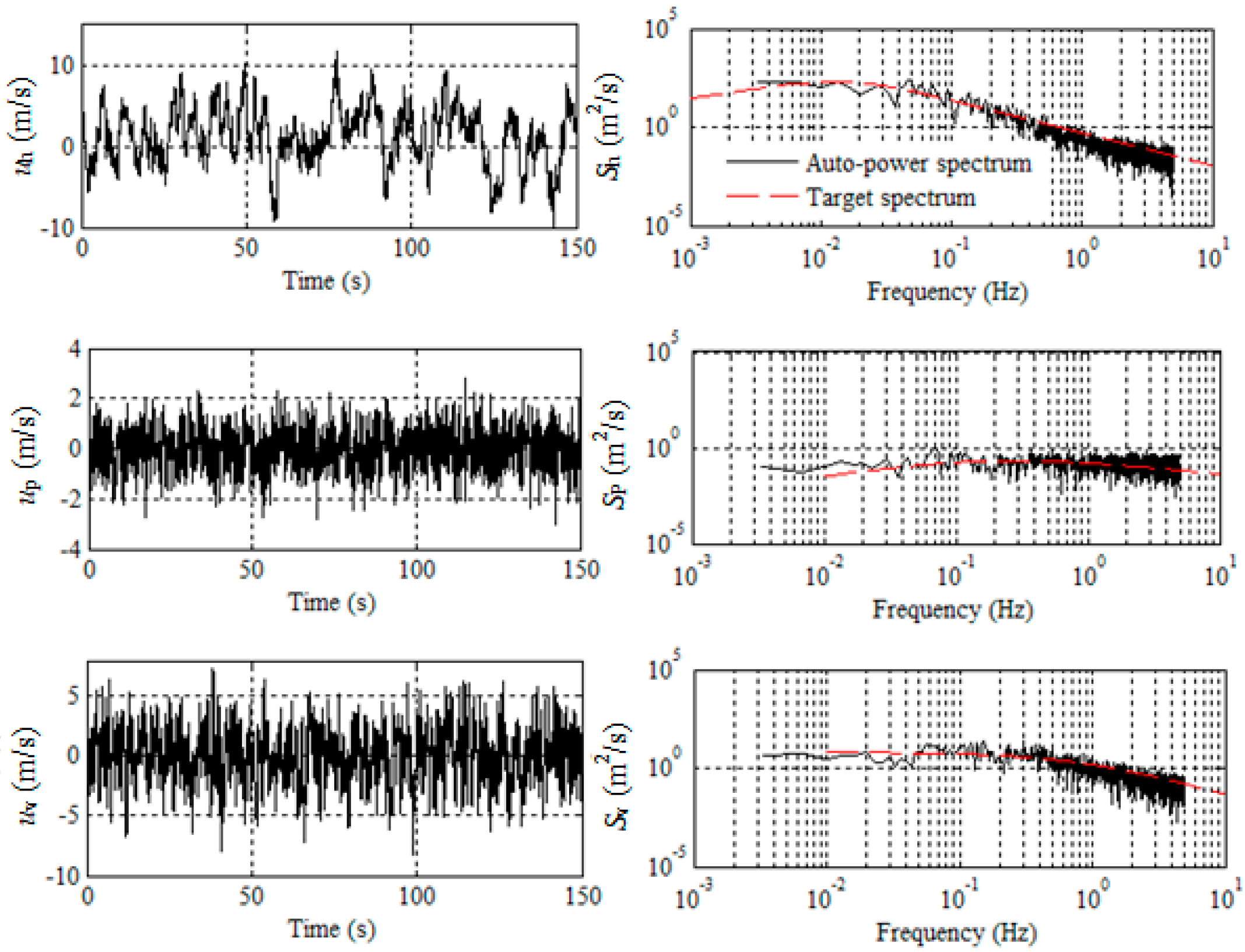
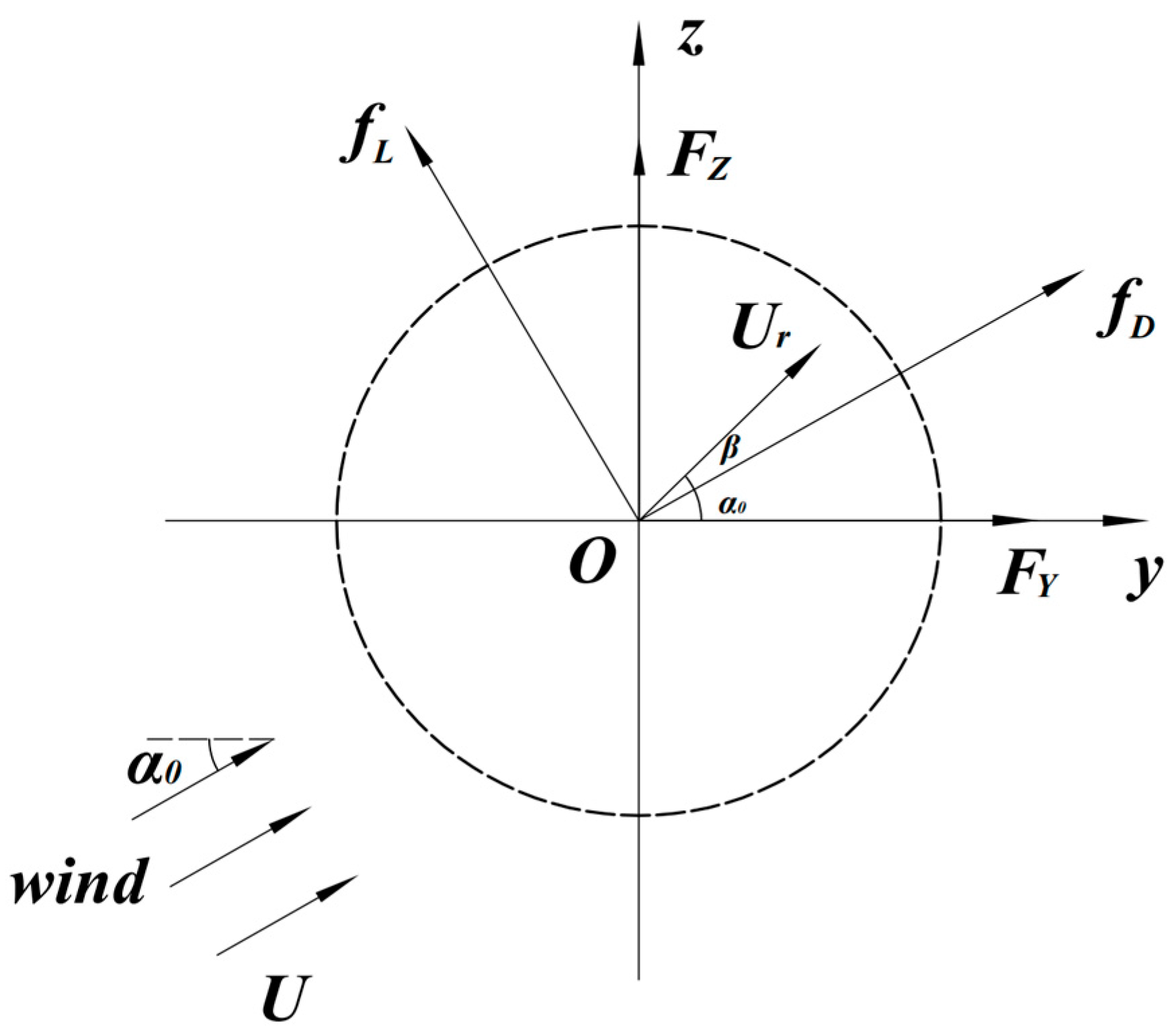
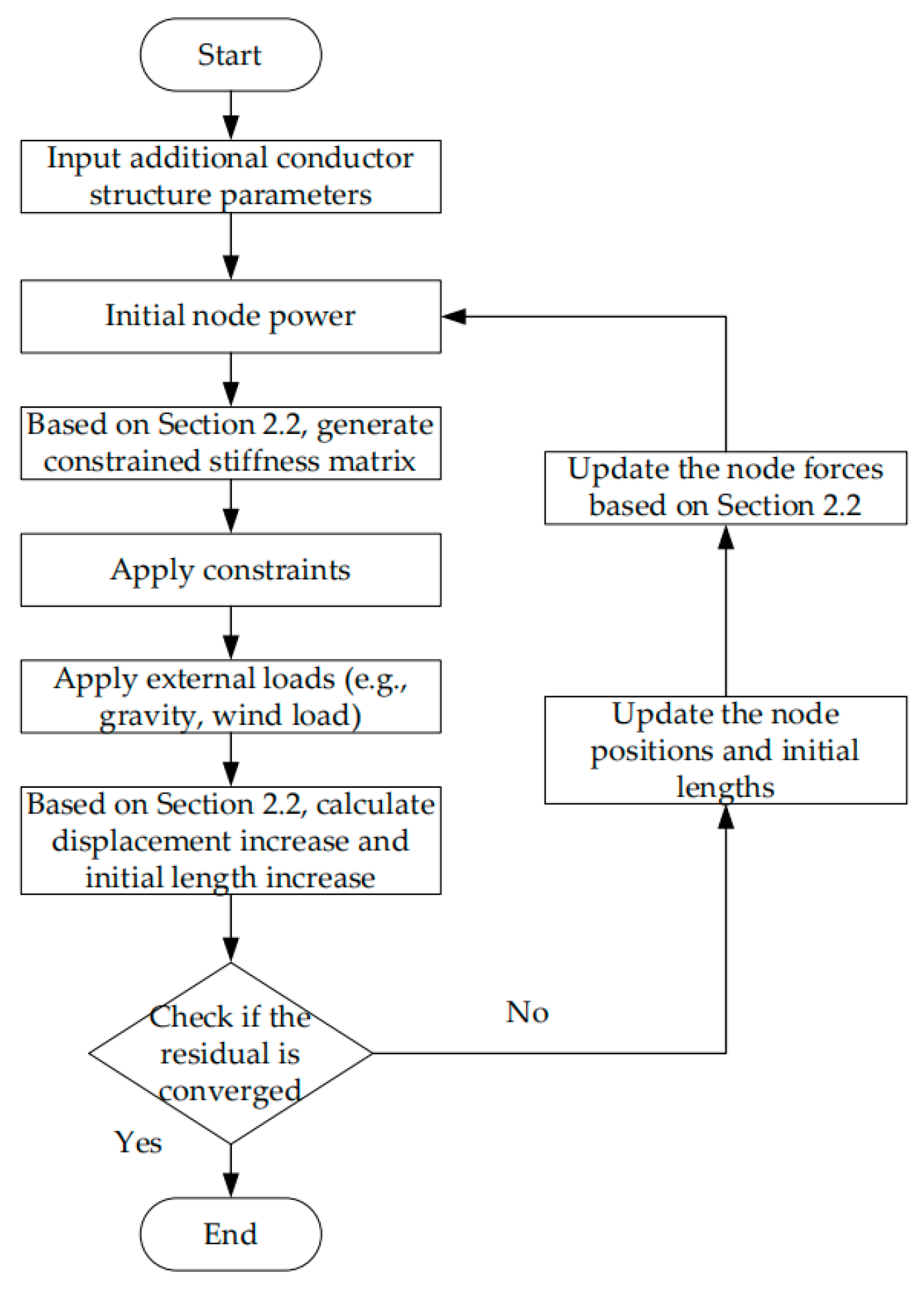
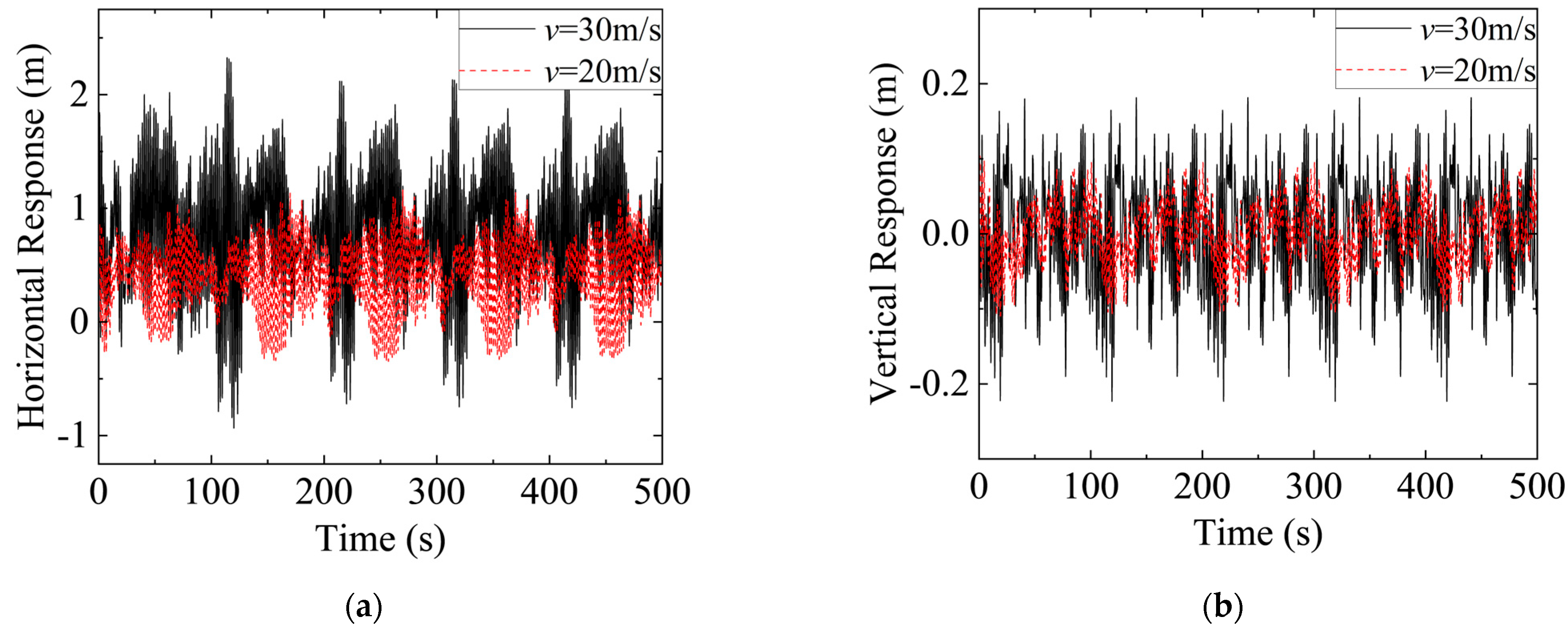
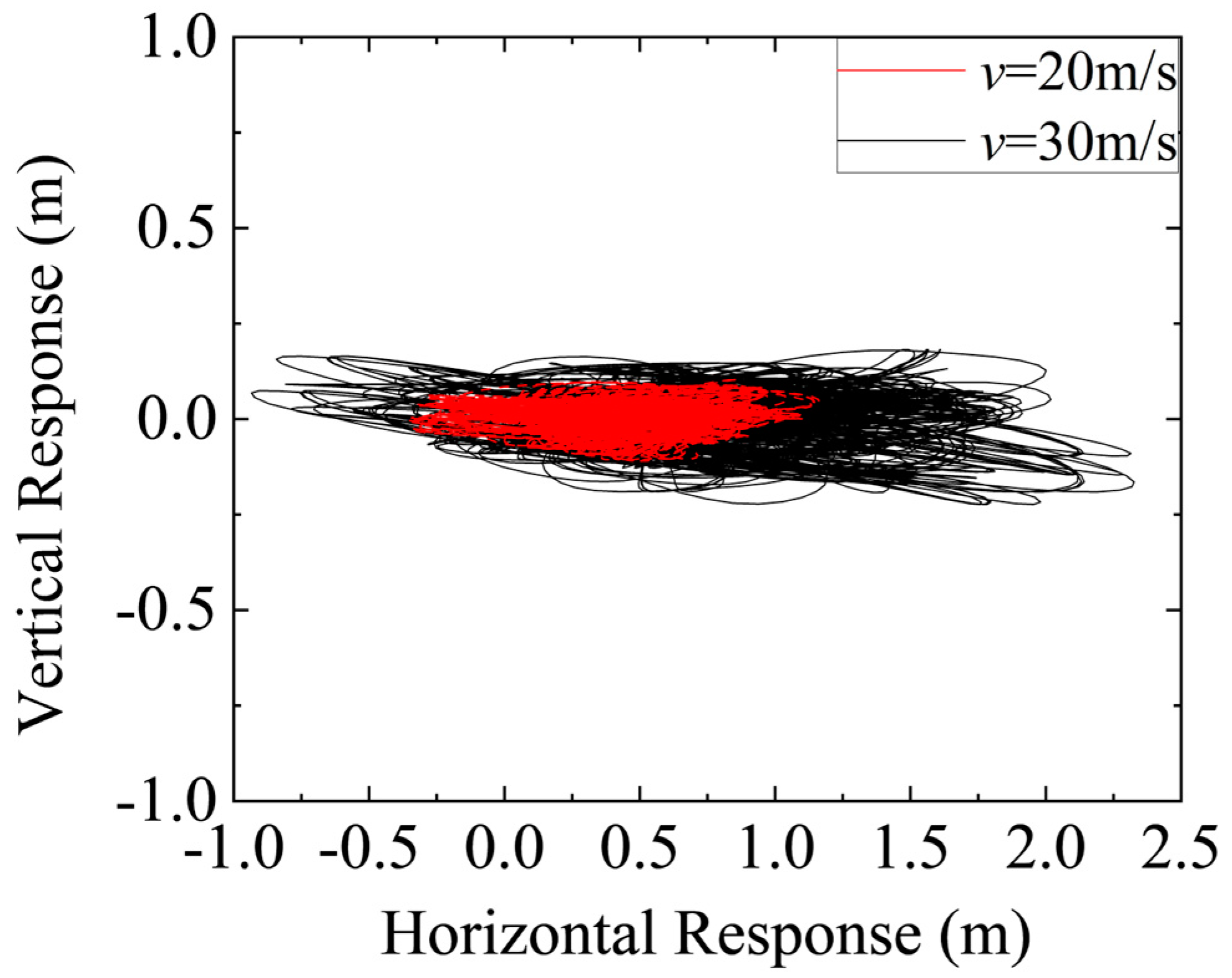
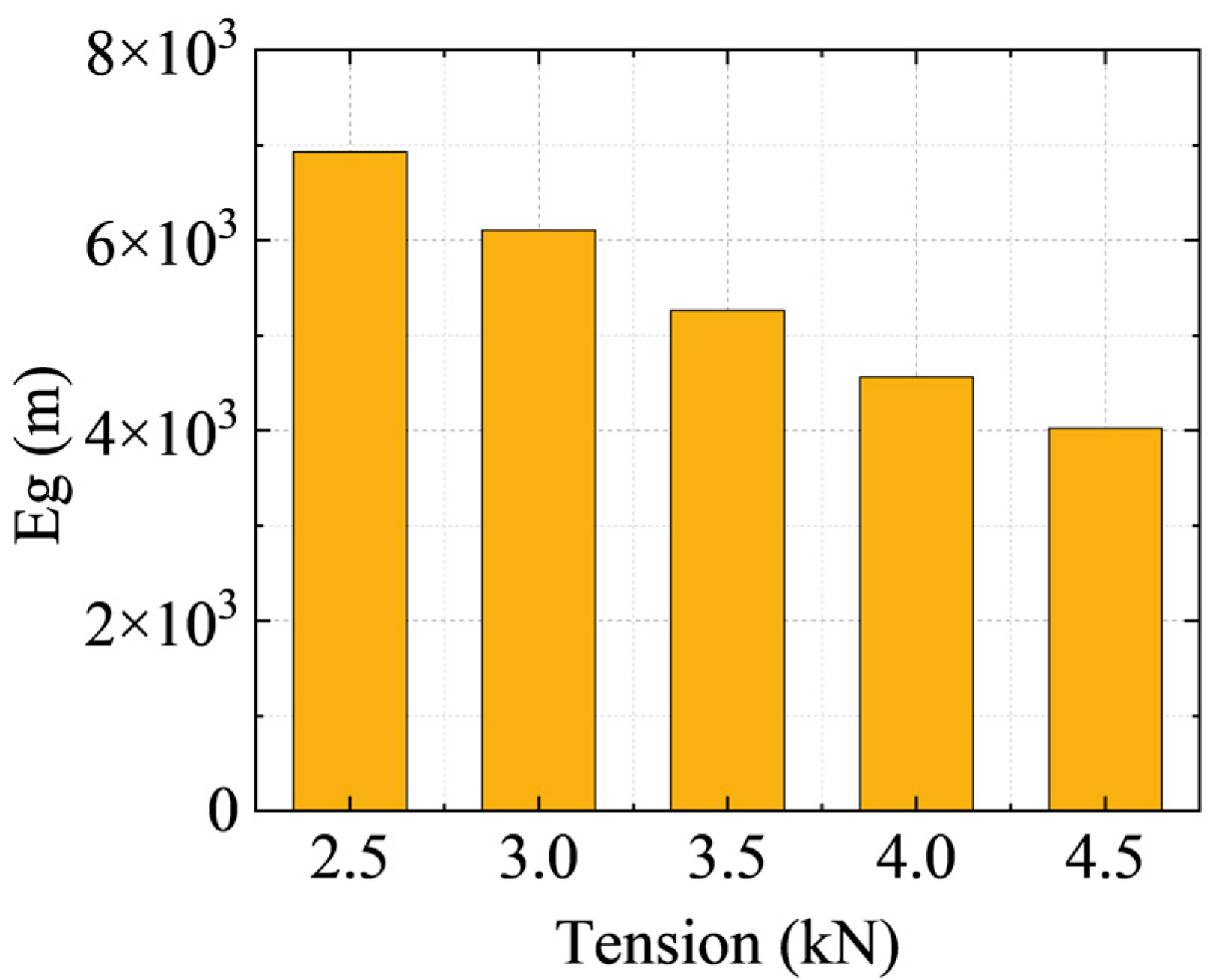
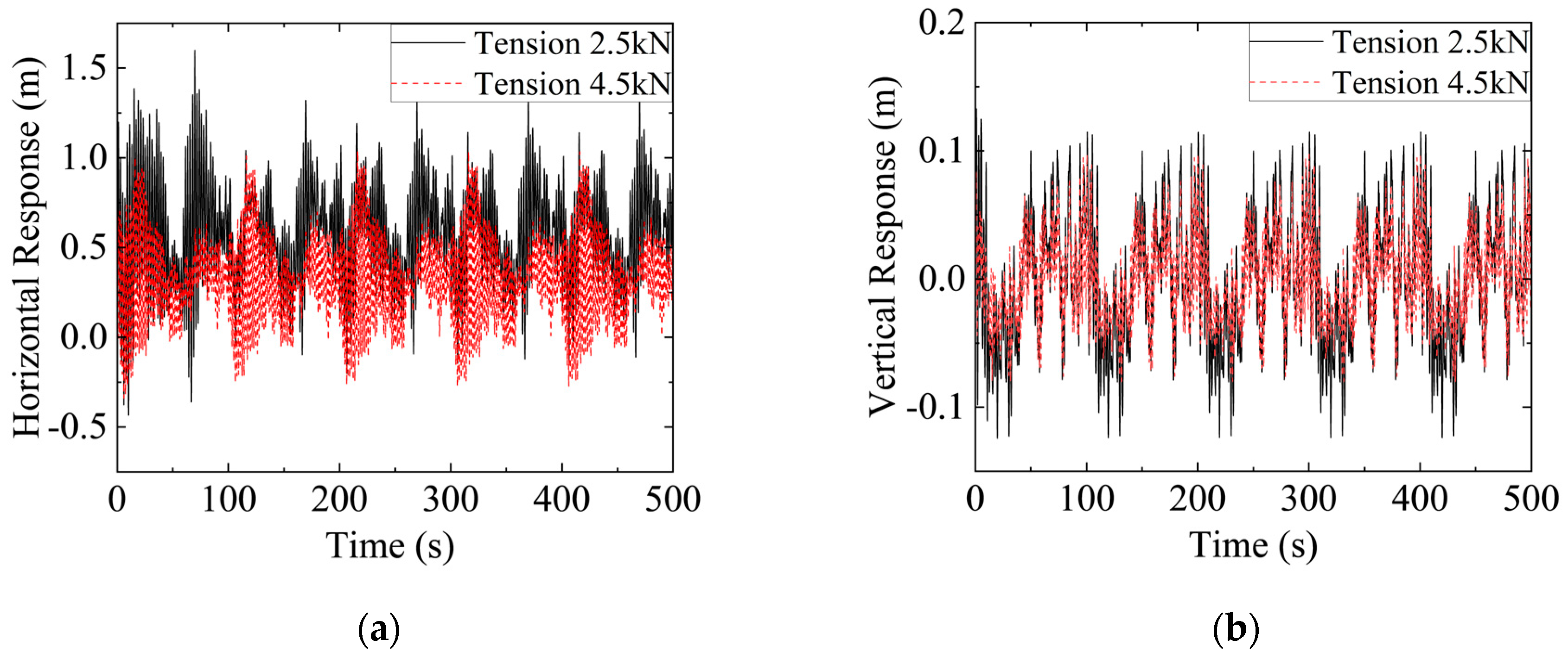
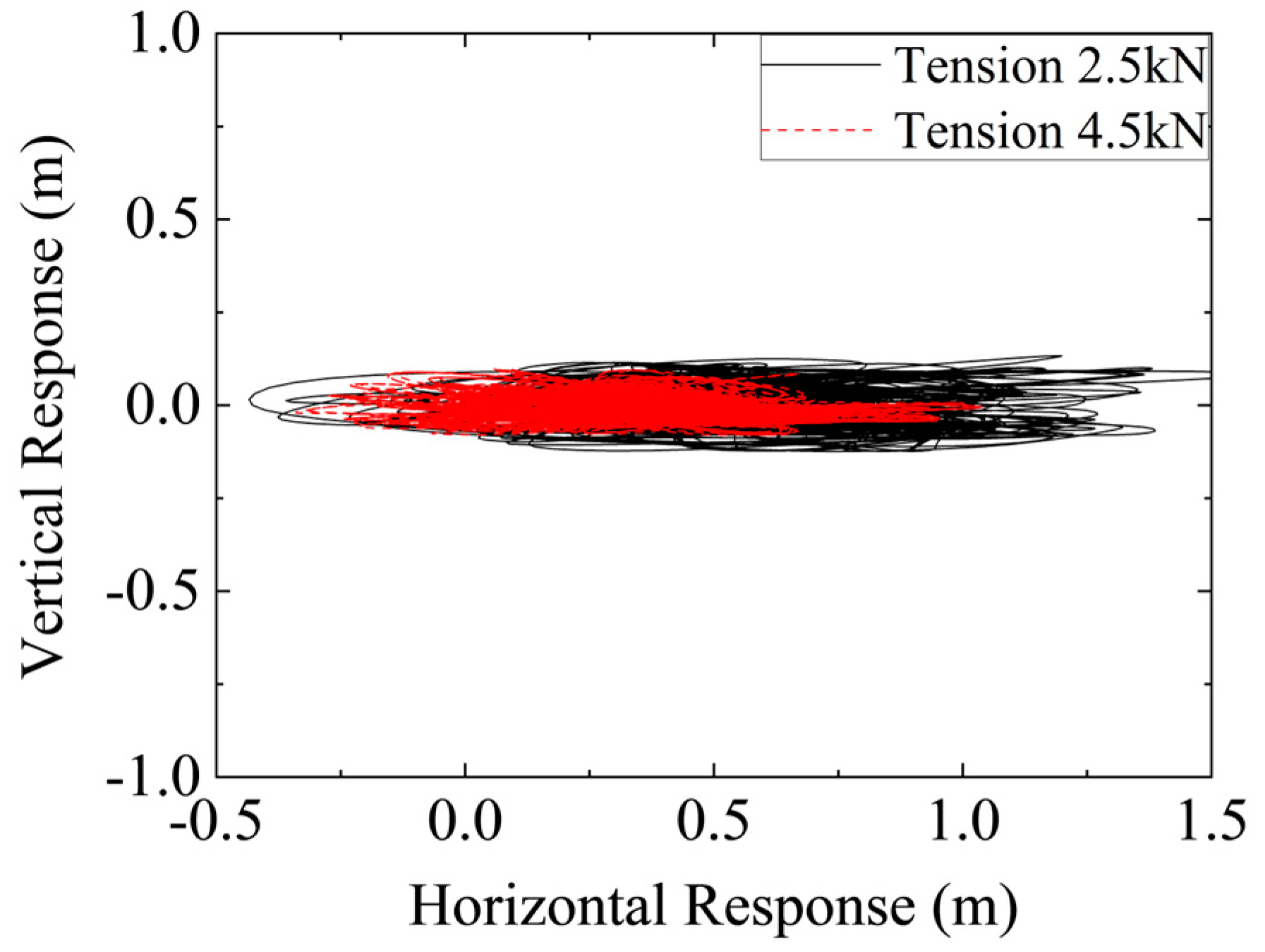
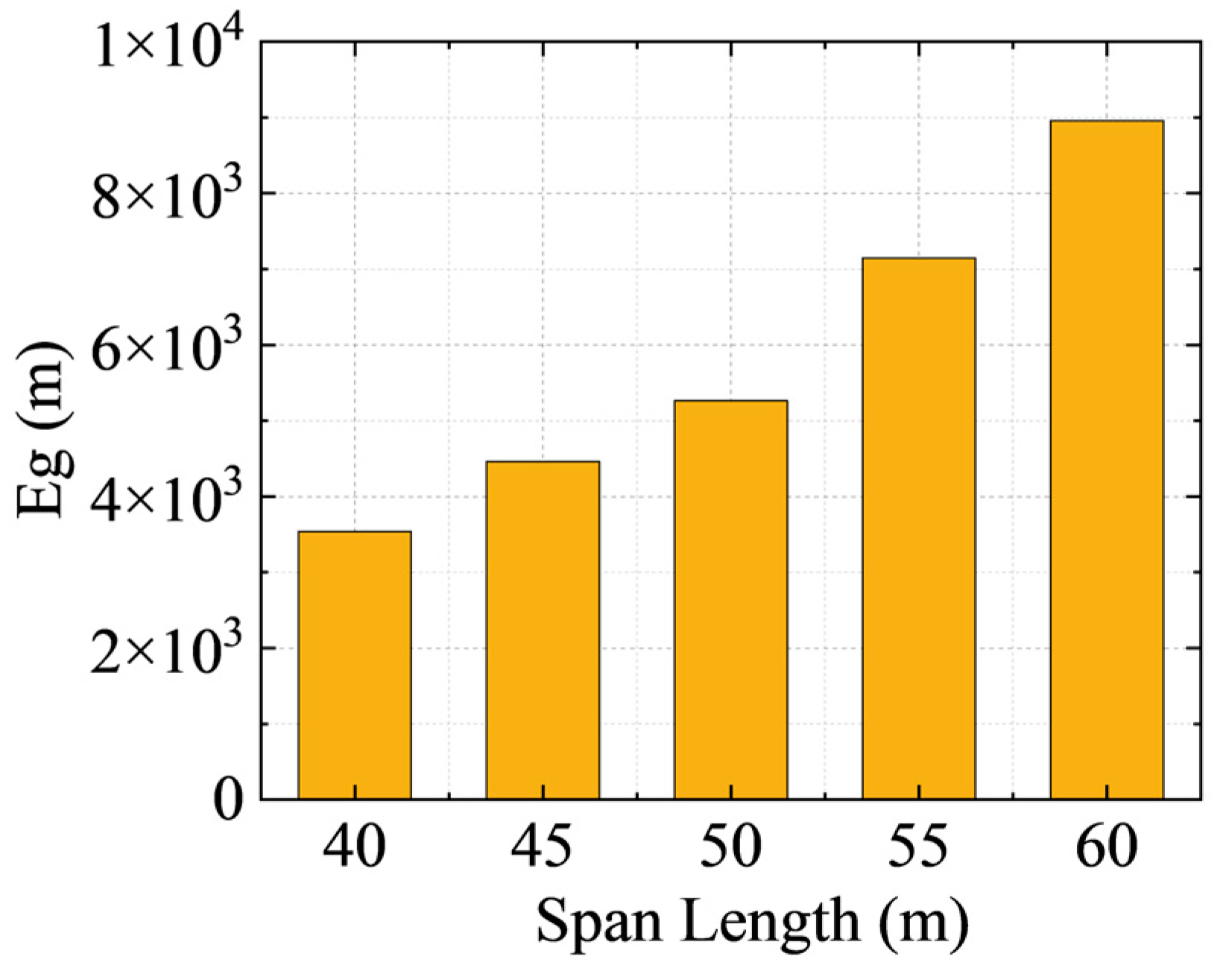
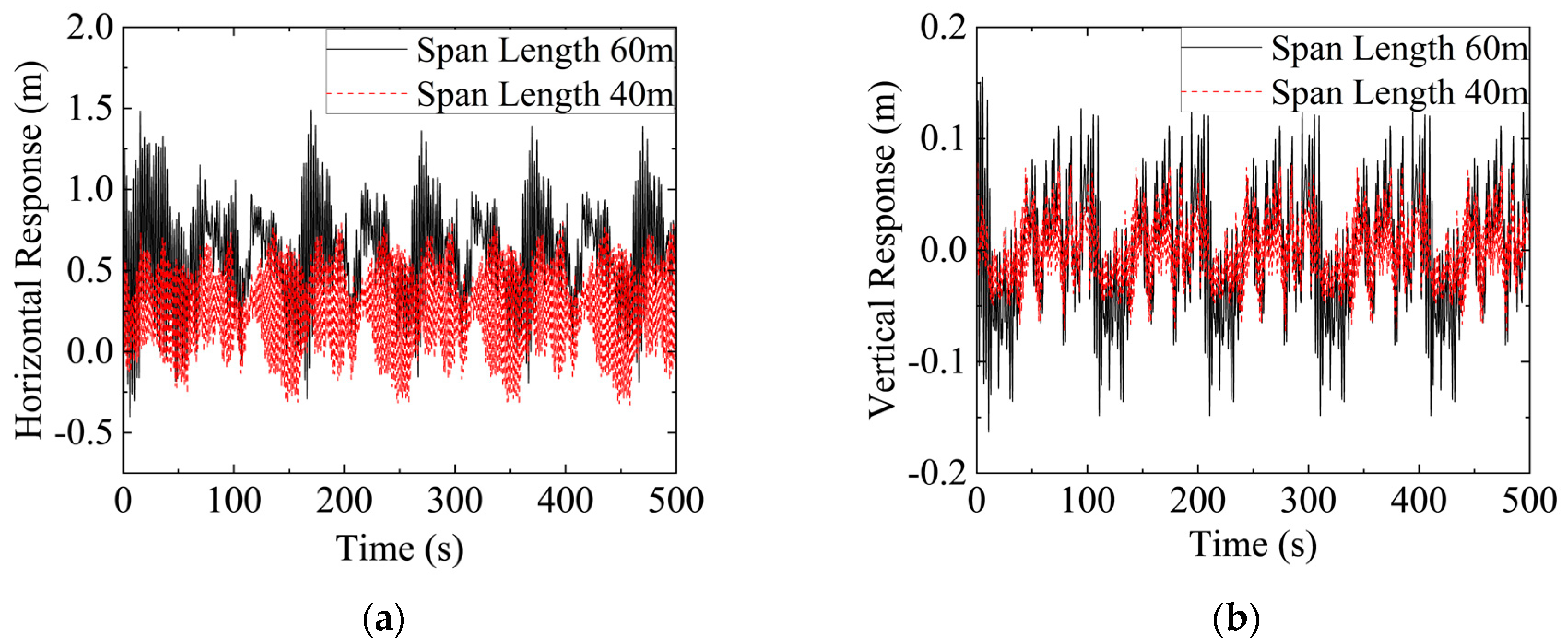
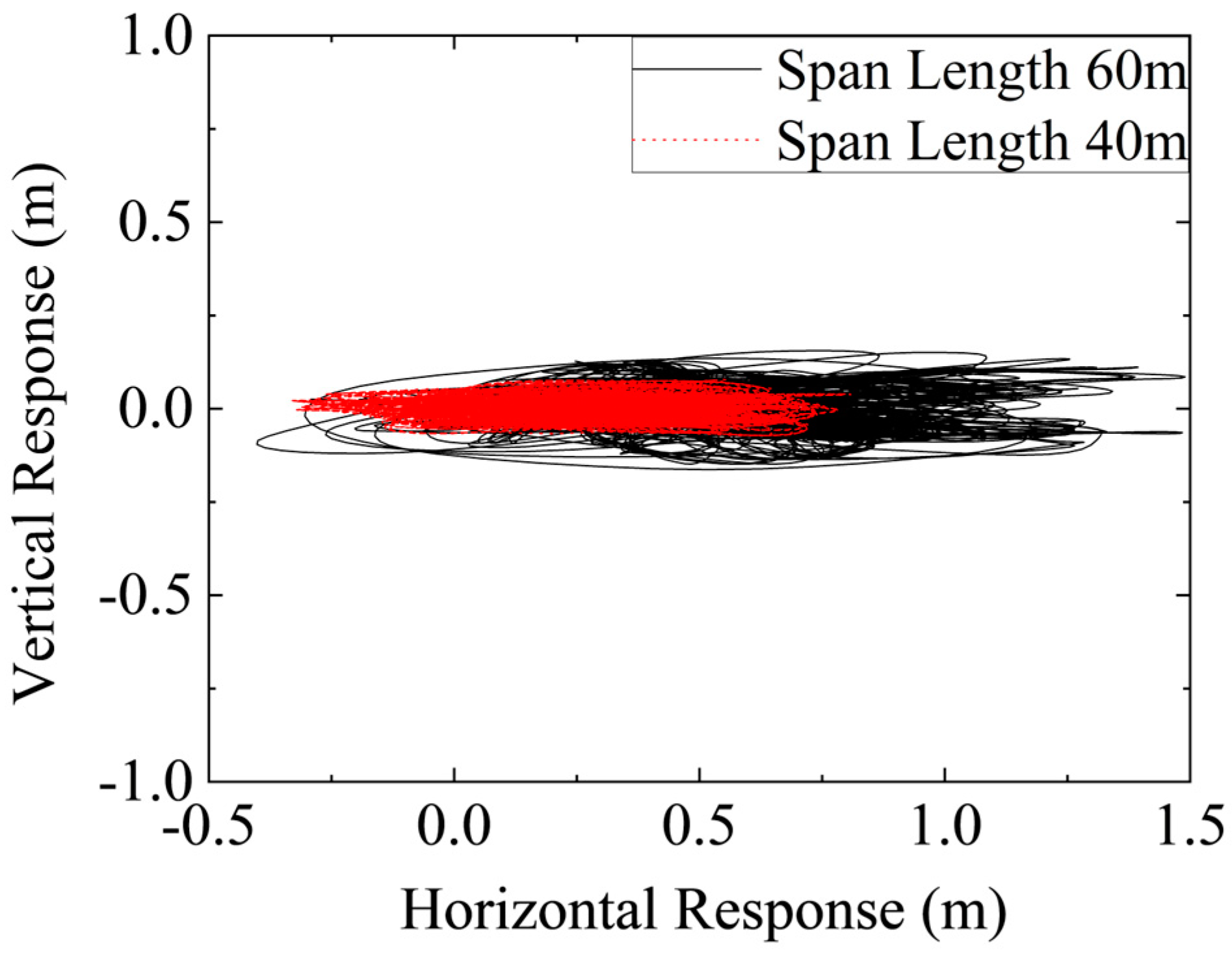
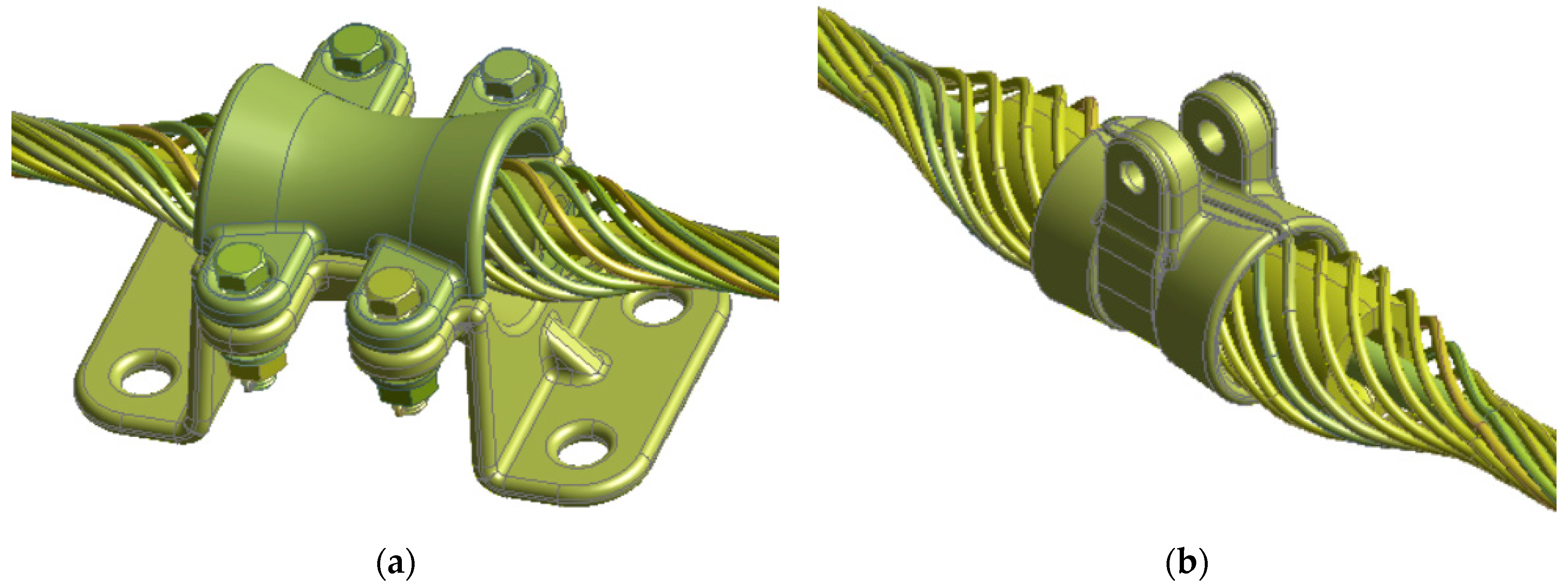
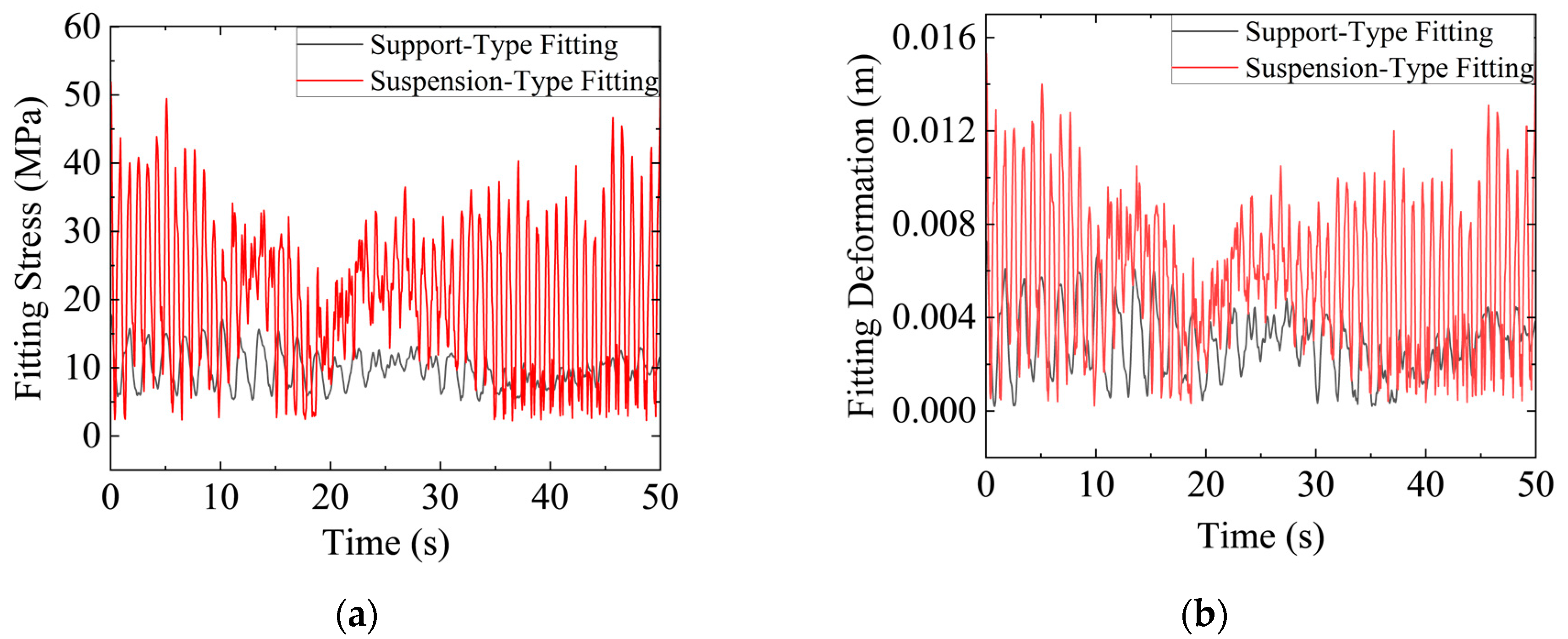
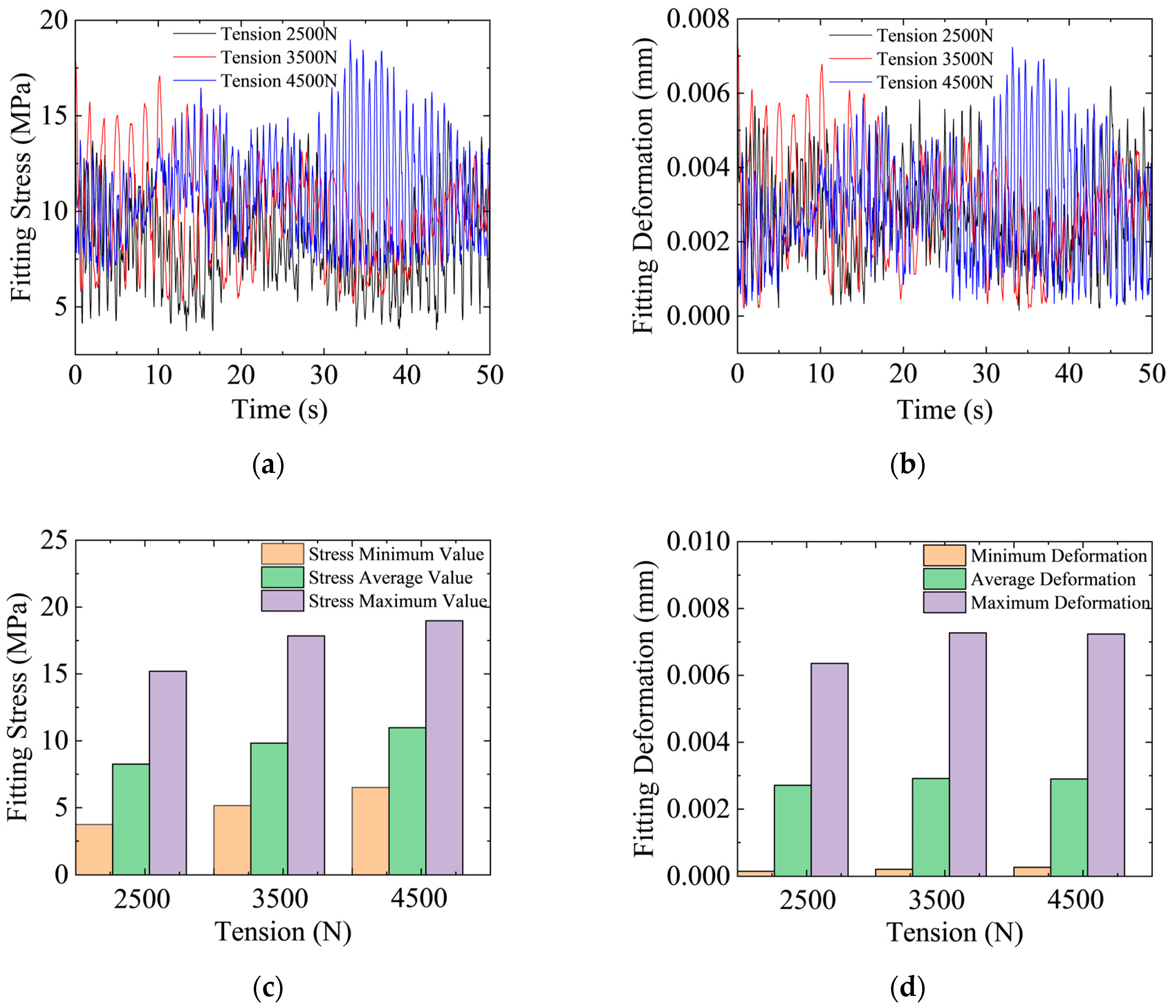
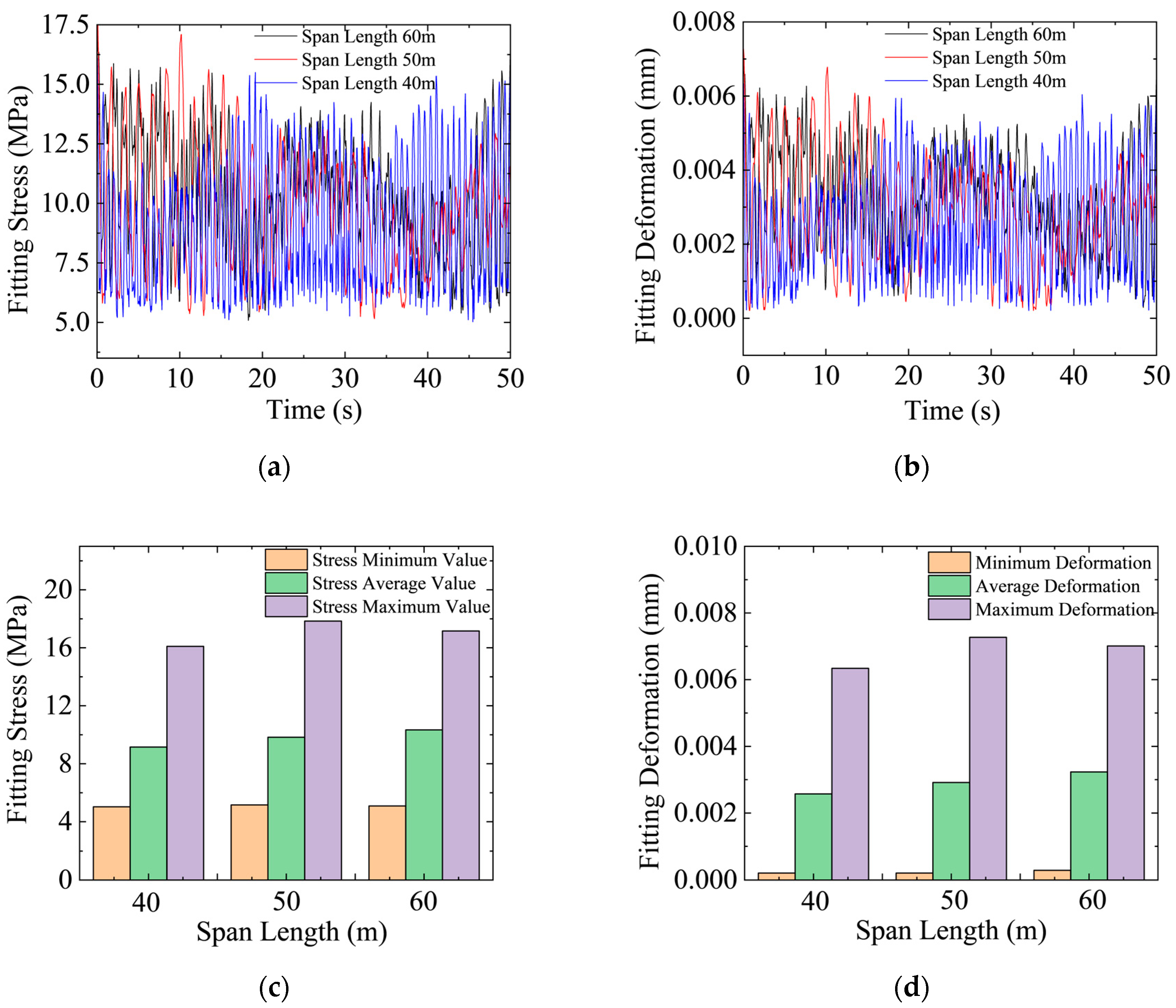
| Conductor Parameters | Value |
|---|---|
| Rated Tension (N) | 3500 |
| Cross-Sectional Area (mm2) | 333.33 |
| Mass (kg/km) | 1058 |
| Elastic Modulus (Gpa) | 65.0 |
| Density (kg/m3) | 3076.12 |
Disclaimer/Publisher’s Note: The statements, opinions and data contained in all publications are solely those of the individual author(s) and contributor(s) and not of MDPI and/or the editor(s). MDPI and/or the editor(s) disclaim responsibility for any injury to people or property resulting from any ideas, methods, instructions or products referred to in the content. |
© 2025 by the authors. Licensee MDPI, Basel, Switzerland. This article is an open access article distributed under the terms and conditions of the Creative Commons Attribution (CC BY) license (https://creativecommons.org/licenses/by/4.0/).
Share and Cite
Pan, L.; Yang, A.; Xing, T.; Yuan, Y.; Wang, W.; Song, Y. Analysis of Wind-Induced Vibration Response in Additional Conductors and Fittings Based on the Finite Element Method. Energies 2025, 18, 2487. https://doi.org/10.3390/en18102487
Pan L, Yang A, Xing T, Yuan Y, Wang W, Song Y. Analysis of Wind-Induced Vibration Response in Additional Conductors and Fittings Based on the Finite Element Method. Energies. 2025; 18(10):2487. https://doi.org/10.3390/en18102487
Chicago/Turabian StylePan, Like, Aobo Yang, Tong Xing, Yuan Yuan, Wei Wang, and Yang Song. 2025. "Analysis of Wind-Induced Vibration Response in Additional Conductors and Fittings Based on the Finite Element Method" Energies 18, no. 10: 2487. https://doi.org/10.3390/en18102487
APA StylePan, L., Yang, A., Xing, T., Yuan, Y., Wang, W., & Song, Y. (2025). Analysis of Wind-Induced Vibration Response in Additional Conductors and Fittings Based on the Finite Element Method. Energies, 18(10), 2487. https://doi.org/10.3390/en18102487







